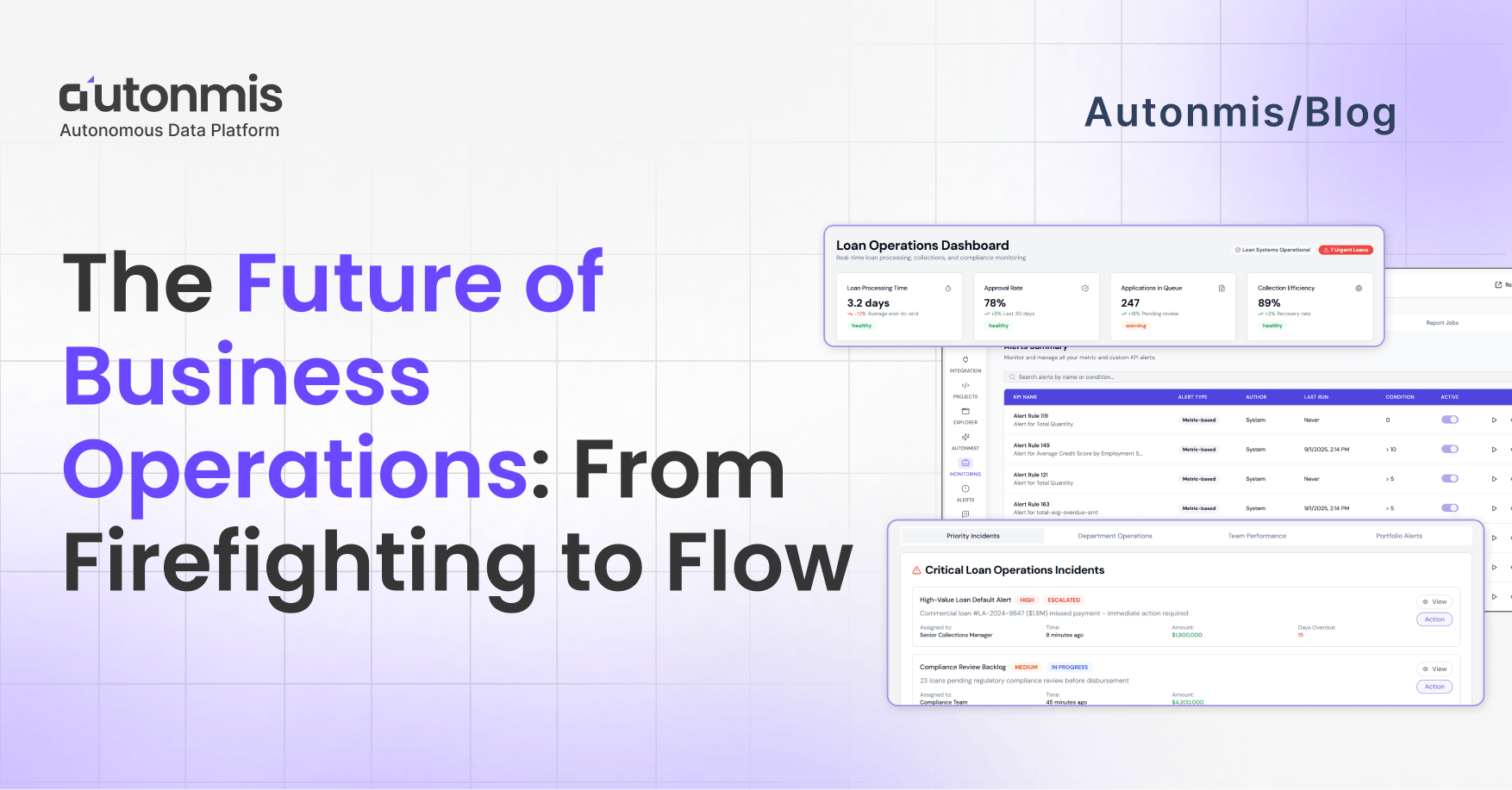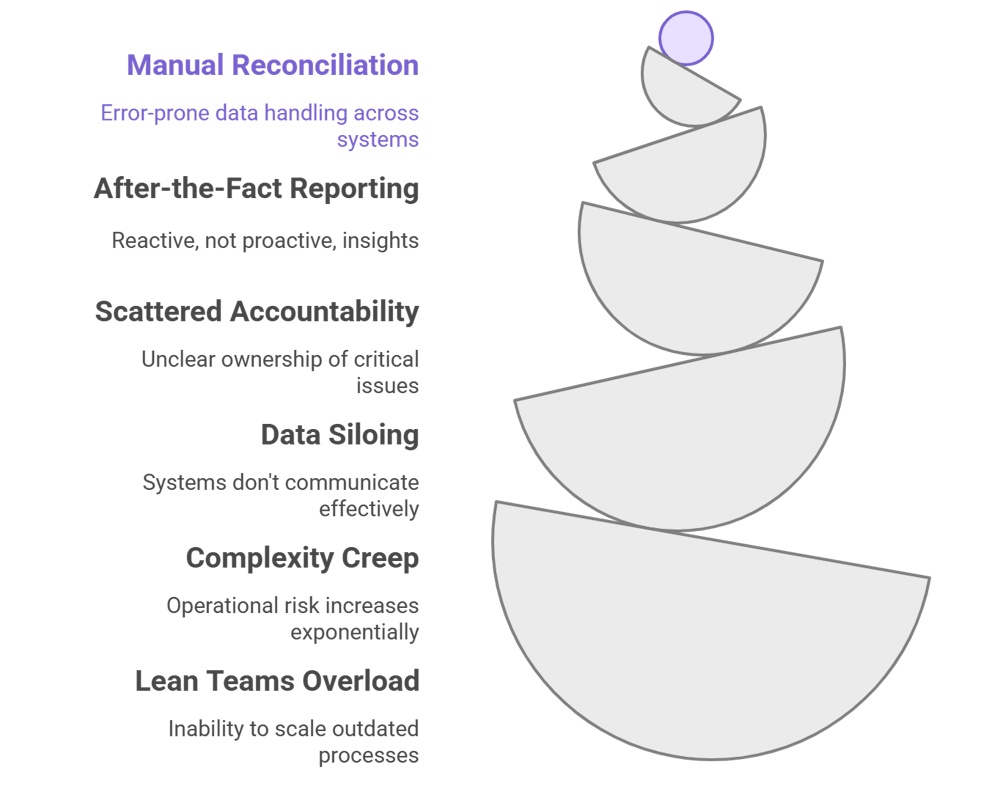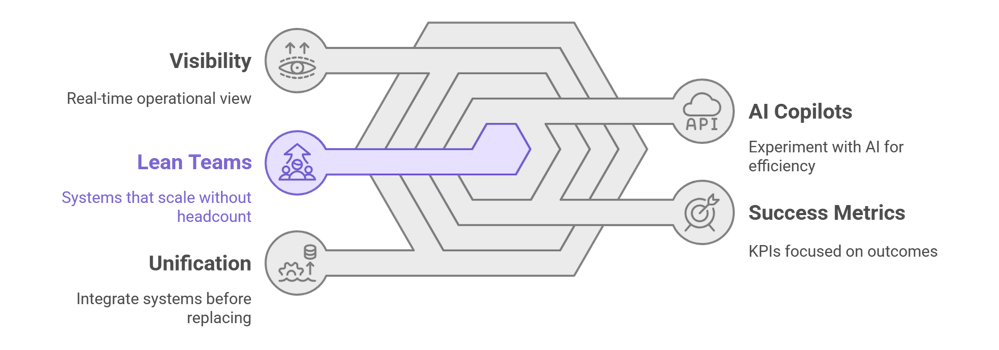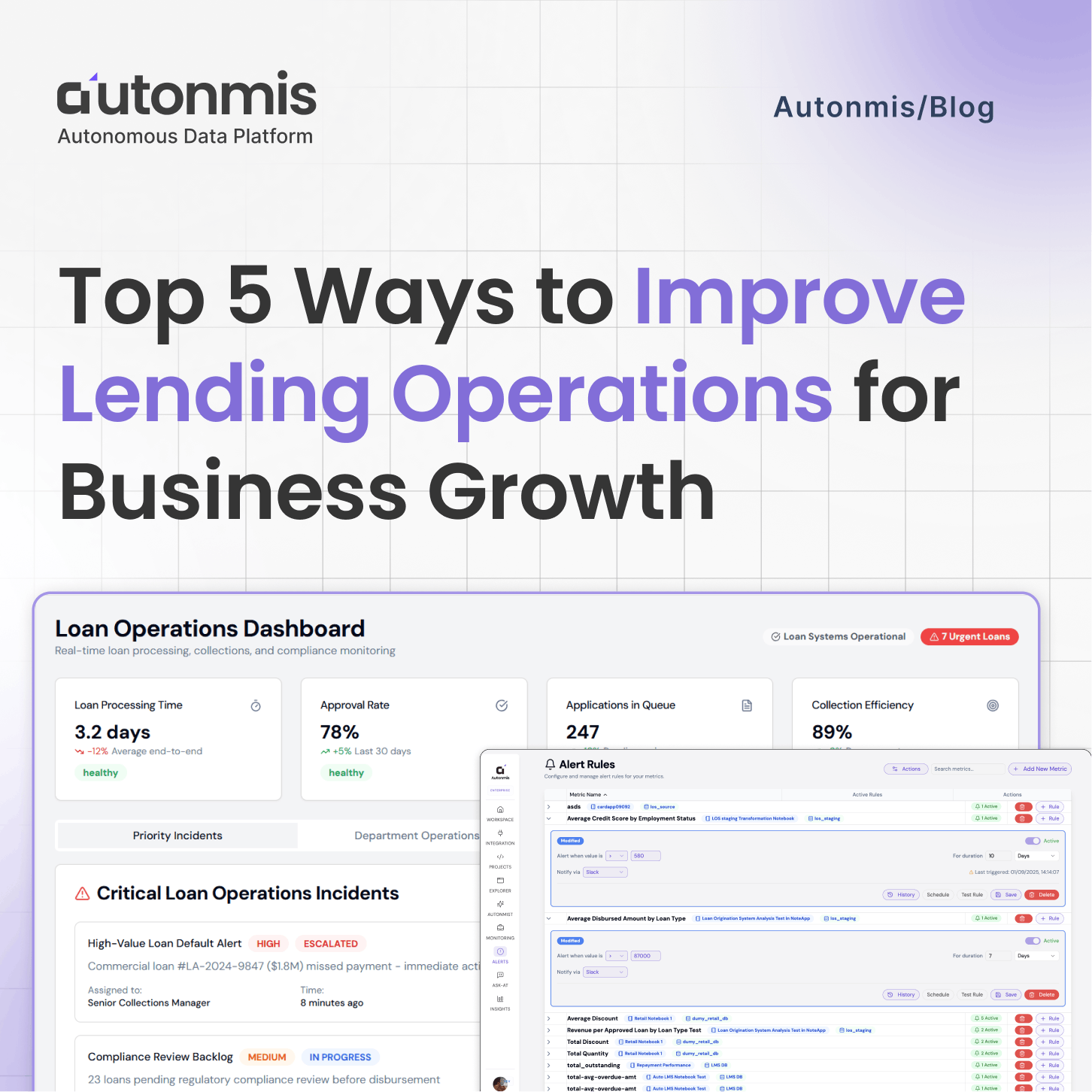Table of Contents
Loading table of contents...
The Future of Business Operations: From Firefighting to AI-Driven Flow
Discover how the future of business operations is evolving. Learn why traditional models are failing and how to adapt for success in a fast-paced world.
October 3, 2025

AB

Operations used to be the quiet backbone of a business. If everything ran smoothly, nobody thought about it. If something failed, everyone scrambled.
But that’s no longer enough.
The pace of business in 2025 isn’t just faster, it’s different. Customers expect instant resolution. Regulators expect audit trails that are airtight. Teams are leaner than ever. And data once a monthly MIS pack - now flows continuously from dozens of systems.
This is why leaders are rethinking what “ops” even means. It’s not just a cost center or back office function anymore. It’s the control system of the business. And how you run it will increasingly decide whether your company scales with confidence, or constantly stumbles.
This piece reflects on the Future of business Operations.
Why the Old Ops Model Is Breaking
Most organizations are still running operations the way they did ten years ago:
- Manual reconciliation: People copy-pasting data across systems, hoping nothing slips.
- After-the-fact reporting: Dashboards and MIS that tell you what went wrong, not what’s about to.
- Scattered accountability: Issues float across Slack, email, and sheets with no clear owner.
That model worked when volumes were lower, regulations were lighter, and customers were more forgiving.
Today, it breaks down because:
- Data lives everywhere. CRMs, ERPs, payments, support systems, spreadsheets. None of them talk to each other.
- Complexity compounds. Every new product, partner, or geography adds a new layer of operational risk.
- Lean teams can’t scale old processes. You don’t have 50 people to chase reports anymore. You have five.
The result is a paradox every leader knows: dashboards look green while customers are complaining, penalties are racking up, and your team is firefighting.

Checkout: Top 6 Ways to Improve Business Operations (That Actually Work)
What is Changing?
The good news? We’re at the start of a fundamental shift in how operations are designed and run.
Here are the big changes already reshaping the landscape:
1. From Reactive to Predictive
Ops has always been about catching errors after the fact. But with AI and real-time data integration, the future of business operations is about spotting risks before they spiral.
- Payments that look like they’ll fail tomorrow.
- SLAs trending toward breach.
- Customer escalations predicted before they hit support.
This isn’t theory. Companies are already wiring alerts that don’t just flag what happened, but forecast what’s likely.
2. From Scattered Systems to a Command Center
Every leader has felt the pain of jumping between five dashboards to answer one question. The new model is a single layer of operational intelligence that sits above core systems and unifies them into one live picture.
Not a replacement, but a control tower.
3. From Activities to Outcomes
Ops metrics are shifting. The question is no longer “How many reports did we generate?” but “How many issues did we prevent?” or “How quickly did high-value work get resolved?”
The emphasis is on outcomes that matter to the business speed, trust, compliance, not activity for its own sake.
4. From Human-Only to Human + AI
AI is not here to replace operators. It’s here to reduce the noise:
- Highlight the 5% of cases that really matter.
- Suggest the next action instead of leaving teams to guess.
- Handle repetitive edge cases so humans focus on judgment calls.
The future operator is part firefighter, part analyst, part pilot, but always assisted by AI copilots that surface the right signals.
Checkout: The Cost of Escalation Delays in Lending Ops
What This Means for Leaders
If you’re a technical or operations leader, the future of ops isn’t something to watch passively. It’s something to design toward.
Here’s what that looks like in practice:
- Unify first, don’t replace.
Don’t rip out core systems. Overlay intelligence across them. Integration beats wholesale migration. - Invest in visibility.
Blind spots are what kill execution. Aim for one real-time operational view that your team and leadership can trust, even if it starts small. - Redefine success metrics.
Move beyond “reports generated” or “cases processed.” Define KPIs in terms of speed, customer trust, compliance, and cost saved. - Build for lean teams.
Assume you’ll always have fewer people than you want. Systems should scale without scaling headcount. - Experiment with AI copilots now.
Don’t wait for a perfect system. Start small anomaly detection, natural language queries, alert routing and expand.

Checkout: The Hidden Cost of Manual Operations in BFSI
Where Ops Is Headed (2025–2030)
Looking out, here’s the arc we’re on:
- Ops as an intelligence layer: Not BI dashboards, but live copilots that sit in the flow of work.
- Ops as a trust layer: Compliance, audit trails, SLA outcomes baked in from the start.
- Ops as a growth driver: The faster you resolve issues and maintain customer confidence, the more you can scale without bottlenecks.
By 2030, operations won’t be thought of as “back office” at all. They’ll be the nervous system of the business sensing, signaling, and steering in real time.
Final Thought
The future of business operations isn’t about chasing more dashboards or adding more tools. It’s about shifting from a world where teams fight fires to one where they flow:
- Problems surface early.
- Teams act with clarity.
- Leadership trusts the data in front of them.
Ops has always been about keeping the business running. The future is about making it run better - faster, leaner, and with more confidence.
Recommended Blogs

10/17/2025

AB
How GFF 2025 Changes the Way BFSI Will Operate in India

10/13/2025

AB
Top 5 Ways to Improve Lending Operations for Business Growth
Actionable Operational Excellence
Autonmis helps modern teams own their entire operations and data workflow — fast, simple, and cost-effective.